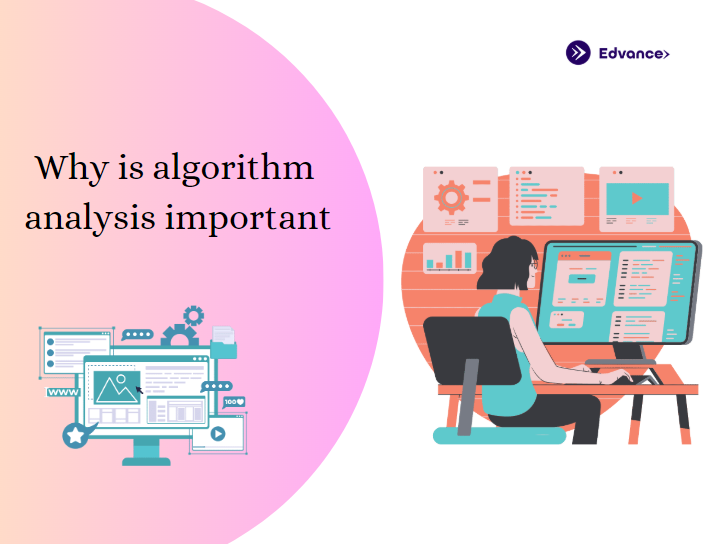In the realm of computer science, understanding the efficiency and effectiveness of algorithms is paramount. Whether you’re a student, a seasoned software developer, or someone venturing into the field of data structures and algorithm, knowing how to analyze algorithms is a skill that can set you apart. But why exactly is algorithm analysis so crucial? This post will explore its importance and how it intersects with various aspects of technology and education.
What is Algorithm Analysis?
Algorithm analysis is the process of determining the computational efficiency of an algorithm in terms of time and space. This involves understanding how the algorithm performs with varying input sizes and the resources it requires. By doing so, we can predict its behavior and scalability. This practice is not just theoretical; it has practical applications that can drastically affect the performance of software and systems.
Importance of Algorithm Analysis in Data Structures and Algorithm
1. Performance Optimization
At its core, algorithm analysis helps optimize performance. In today’s fast-paced digital world, users expect applications to function seamlessly and efficiently. A poorly optimized algorithm can lead to slow processing times, which may frustrate users and even result in financial losses for businesses. For instance, consider search engines or e-commerce platforms that process millions of queries every second. A small inefficiency in an algorithm can multiply into significant delays.
Algorithm analysis allows developers to identify bottlenecks and improve performance. Understanding the relationship between data structure and algorithm is critical here, as the choice of data structures often dictates how efficiently an algorithm can run.
2. Scalability and Big Data
With the advent of big data, scalability has become more important than ever. Systems need to handle enormous datasets without compromising performance. An algorithm that works well with small data may falter with larger datasets. Algorithm analysis ensures that solutions are scalable and can manage exponential growth in data volume.
Take social media platforms, for instance. These systems handle billions of user interactions daily. Without efficient algorithms, delivering real-time updates and recommendations would be nearly impossible. Data structure and algorithm concepts play a foundational role in designing scalable systems.
3. Resource Management
Computational resources, such as CPU cycles, memory, and bandwidth, are not infinite. Efficient algorithms ensure these resources are utilized judiciously. Sorting algorithms such as QuickSort and MergeSort, for example, have varying temporal complexity. While QuickSort is faster in most scenarios, it may use more memory due to recursion. Algorithm analysis helps in selecting the right balance between time and space efficiency based on the use case.
4. Comparative Analysis
Another critical reason for algorithm analysis is the ability to compare different algorithms solving the same problem. For example, consider searching for a specific item in a dataset. You can choose between a linear search, which has a time complexity of O(n), or a binary search, which operates in O(log n) time but requires the data to be sorted. Through analysis, developers can make informed decisions about which algorithm suits their requirements best.
5. Building a Strong Foundation in Computer Science
For students and professionals alike, algorithm analysis is an indispensable part of computer science education. It cultivates problem-solving skills and a deeper understanding of how algorithms work under the hood. Mastery of these concepts is essential for acing technical interviews and developing robust applications.
6. Cost Efficiency
In the commercial world, efficiency often translates directly into cost savings. Cloud computing platforms, for instance, charge based on resource usage. An inefficient algorithm that takes longer to execute can increase operational costs. By analyzing and optimizing algorithms, businesses can save significant amounts of money.
How Algorithm Analysis Works in Data Structures and Algorithm
1. Time Complexity in DSA
Time complexity quantifies how an algorithm’s runtime varies with input size. This is often expressed using Big O notation, such as O(1), O(n), O(n^2), etc. Time complexity aids in forecasting an algorithm’s scalability. For instance, algorithms with O(n log n) complexity, like MergeSort, perform better on large datasets compared to those with O(n^2) complexity, like BubbleSort.
2. Space Complexity in DSA
Space complexity evaluates the memory requirements of an algorithm. This includes both the space needed to hold data structures and the overhead for variables and function calls. An algorithm that requires too much memory can slow down or crash a system, especially on resource-constrained devices.
3. Best, Average, and Worst Case Analysis
Algorithm analysis typically involves assessing performance in three scenarios:
- Best Case: The algorithm performs the minimum number of steps (e.g., searching for the first element in a list).
- Average Case: The algorithm’s performance under typical conditions.
- Worst Case: The algorithm takes the maximum number of steps (e.g., searching for an element that doesn’t exist).
Understanding these cases allows developers to prepare for all possible outcomes.
The Role of Data Structures
Data structure and algorithm go hand in hand. Data structures are the building blocks that allow algorithms to perform efficiently. Choosing the right data structure can simplify the problem-solving process. For instance:
- Arrays and linked lists are suitable for storing sequential data.
- Hash tables provide quick lookups but require good hash functions to minimize collisions.
- Trees and graphs are ideal for hierarchical or networked data.
When paired effectively with algorithms, data structures can make even complex operations more efficient.
Educational Significance
Algorithm analysis is a cornerstone of computer science curricula. It encourages critical thinking and the ability to solve real-world problems. Many educational platforms and coding bootcamps emphasize learning algorithm analysis through projects, challenges, and case studies.
One standout platform in this space is Edvance, a cutting-edge edtech startup dedicated to empowering software engineers by enhancing their skills in data structures, algorithms (DSA), and system design. Edvance’s carefully designed curriculum and expert mentorship bridge the gap between theoretical knowledge and practical application, ensuring that learners are job-ready for top-tier companies. By focusing on career advancement and offering placement assistance, Edvance equips aspiring engineers with the tools they need to excel in the competitive tech industry.
Beyond formal education, professionals constantly revisit these concepts to stay relevant in a competitive job market. Online platforms like Coursera, LeetCode, and HackerRank provide excellent resources for honing these skills.
Real-World Applications
Algorithm analysis impacts a variety of industries:
- Healthcare: Algorithms are used in diagnostics, drug discovery, and patient data analysis. Efficient algorithms ensure timely and accurate results.
- Finance: In stock trading and risk assessment, fast algorithms are crucial for analyzing market trends and executing trades.
- Artificial Intelligence: Machine learning models rely on optimized algorithms to process large datasets effectively.
- E-commerce: Algorithms power personalized recommendations, search functions, and inventory management systems.
Conclusion
Understanding the importance of algorithm analysis is not just for academics or software engineers. It’s a skill with broad applications, from developing cutting-edge technologies to solving everyday computational problems. By mastering the interplay of data structure and algorithm, individuals and organizations can achieve optimized performance, scalability, and cost-efficiency.
In a world increasingly driven by data and technology, algorithm analysis is not just important—it’s essential. Whether you’re building a simple app or a complex system, investing time in analyzing and optimizing algorithms will pay dividends in the long run. Platforms like Edvance offer invaluable support to learners, bridging the gap between knowledge and real-world application. So, take the plunge, explore, and start integrating these practices into your work and learning journey.



